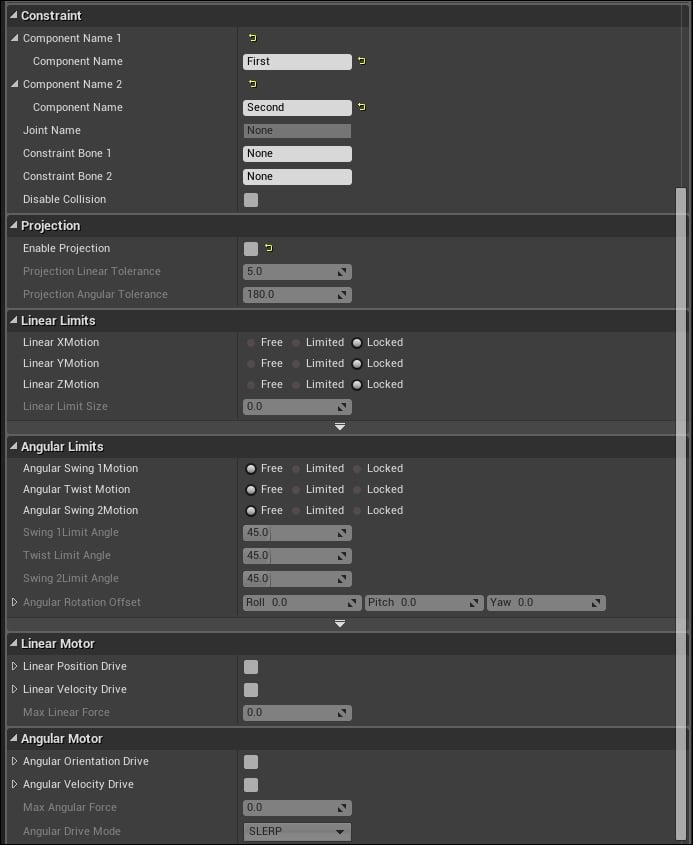A physics constraint is a joint that allows you to connect two Actors or component together and also apply limits or forces on them.
UE4 has a very flexible and data-driven constraint system that allows you to make many different types of joints simply by changing some options. With these components, you are able to create many different objects such as swinging balls, wheels, and gears mechanisms, or simply keep a physics body in a general area.
You can create a Physics Constraint within the scene using Physics Constraint Actor from the Modes panel, or using Physics Constraint Component within a Blueprint class. They are basically the same object with the same properties. The Actor has three prefab settings (ball and socket, hinge, prismatic), but they are only a preset of common usage of the constraint—nothing that can't be reproduced in the Blueprint class:

Let's take a look at the properties of this component:
Component Name 1 and Component Name 2: These are the two Actor...



